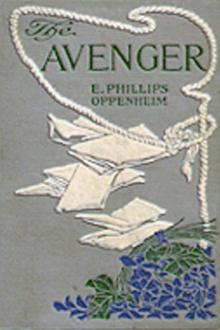Hitler's Terror Weapons, Brooks, Geoffrey [cat reading book .txt] 📗

Book online «Hitler's Terror Weapons, Brooks, Geoffrey [cat reading book .txt] 📗». Author Brooks, Geoffrey
It may, of course, have been something else entirely, but a shipment of seventy to eighty sacks of a very fine grey powder, each sack being about 10 inches high with a diameter of about 12 inches and estimated to weigh 200 cwts (100 kilos) was reported to have been stowed aboard a German blockade runner at Yokohama in 1942. A mate with many years’ experience of cargo handling, Fritz Kurt 78, stated that he had never seen a similar substance before and, despite his tactful enquiries, failed to establish the nature of the “mysterious heavy contents”. The author Charles Gibson observed that Goering, who was head of the Reich Research Council in charge of nuclear supplies in addition to his other roles, had an unexplained special interest in the material.
It seems at least an interesting possibility that, for reasons of product quality, a technical cooperation existed between Japan and Germany for the manufacture or purification of uranium metal powder, and by 1944 at the latest nuclear materials such as beryllium were being exported in the other direction.
The Uranium Bomb
The only publication from an authoritative source where the actual building of a German uranium bomb is mentioned specifically is Henry Picker’s Hitlers Tischgespräche, which is based on stenographic notes taken down at mealtimes at the Führer’s HQ between 1941 and 1944.
The daily routine at Führer HQ Wolfsschanze was described by Hitler’s Luftwaffe ADC Nicolaus von Below in his memoir Als Hitlers Adjutant 1937-1945.79 Hitler ate punctually at two in the afternoon and at seven thirty. If no special visitors were expected, he would take his time at table, often up to two hours. In these several years at mealtimes he would speak freely on many subjects, maybe just seizing on a random theme. The atmosphere at table was free and unforced. Conversation was spontaneous and there was no kind of compulsion about what could be discussed. On subjects of general interest, when Hitler contributed his opinion, silence would be maintained. It might occur occasionally that he held the floor for up to an hour, but this was the exception rather than the rule.
The major part of these monologues was taken down in shorthand by a National Socialist lawyer, Heinrich Heim. When Heim decided to return to Munich in the spring of 1942, the Gauleiters were canvassed to suggest a candidate to fill the vacancy. Among the names supplied was that of a senior privy councillor, Dr Henry Picker. The Party Chancellors drew up a short list of names and left it to Hitler to make the decision. Senator Henry Picker had been active for the NSDAP in Wilhelmshaven and in 1929 had arranged for Hitler to meet representatives of the Navy and naval dockyard. On his visits to the port Hitler was made welcome on numerous occasions as a guest in the Picker household and his selection of Picker was therefore much of a formality.
Picker’s position at Führer HQ was dissimilar to that of Heim in that he had no standing as a Party official or lawyer but was only Martin Bormann’s adjutant. One of his standing duties was to take a note of Hitler’s conversations during the official meals, a task performed for the information of Bormann who was thereby enabled to keep abreast of developments in Hitler’s thinking more or less as it cropped up.
The notebooks were released in 1951 by German Bundespresident Theodor Heuss and the shorthand jottings used as the basis for the volumes of Hitlers Tischgespräche im Führerhauptquartier which have been published in many editions subsequently. All three of Hitler’s military adjutants of the time authenticated the texts, affirming that they truly and accurately reflect the substance of Hitler’s conversations at table.
Picker was in almost permanent contact with Hitler’s Chief ADC, SS-Obergruppenführer Julius Schaub (1898-1968), who had been a Party member from its beginnings. A willing and devoted manservant, Schaub was also Hitler’s chauffeur and the only member of the Führer’s entourage who belonged to the Alte Kämpfer. He was the guardian of nearly all Hitler’s secrets.
There are numerous references to Uraniumbomben in Dr Picker’s testimony, but these were not atom bombs as such, which physicists and politicians knew by the term Uranbomben. Hitler had no wish for a fullblown nuclear explosion and so we must be clear that Uraniumbomben were not atom bombs but something else.
Picker reported Schaub as saying that the Uraniumbomben were the fearsome weapons (die fürchterlichen Waffen) on which Hitler was actually basing his strategy and his hopes. Picker described where the Uraniumbomben were developed and mentioned the unprecedented security measures in force there:
“Dr Ohnesorge’s Reichspost-Forschungsanstalt in Berlin Lichterfelde where - in parallel with an unsuccessful professorial team - a prototype of the German Uraniumbombe was in fact developed up to the stage of construction, received visits from Hitler during his periods of residence in Berlin, during which Dr Ohnesorge never once permitted Hitler’s military entourage to view the research establishment. Ohnesorge, born in 1872, insisted on the greatest secrecy. Amongst co-workers in the Reich Research Institute were such authorities as the atom physicist Baron Manfred von Ardenne.”
The phrase in parallel with an unsuccessful professorial team hints at a connection between Professor Heisenberg’s failed Leipzig experiment in 1942 and what Houtermans was now attempting at Lichterfelde. Precisely as at Leipzig, or so we may be permitted to assume, the underground bunker below Manfred von Ardenne’s property was a laboratory for the production of plutonium-enriched irradiated uranium powder. A number of aluminium spheres containing the powder, heavy water and a Präparat, surrounded by an array of measuring instruments, sat immersed in their respective tubs of ordinary water for a period of months breeding plutonium and the radioactive products of fission. So secret was





Comments (0)